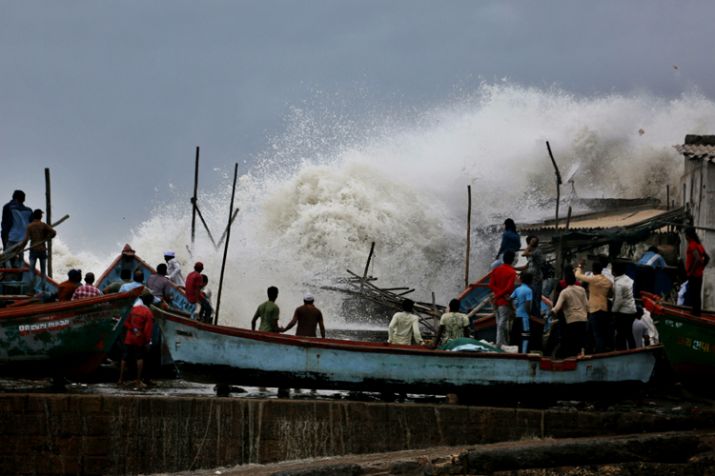
Current Affairs 12th June 2019
Important Current Affairs
Current Affairs 12th June 2019
Cyclonic Storm ‘VAYU’ Over East-Central Arabian
The Very Severe Cyclonic Storm ‘VAYU’ over East-central Arabian Sea moved nearly northwards with a speed of about 13 kmph in last six hours and lay centered over East-central Arabian Sea, about 470 km west-northwest of Goa, 280 km south-southwest of Mumbai (Maharashtra) and 340 km nearly south of Veraval (Gujarat).
It is very likely to move nearly northwards and cross Gujarat coast between Porbandar and Mahuva around Veraval & Diu region as a Very Severe Cyclonic Storm with wind speed 145-155 kmph gusting to 170 kmph around the morning of 13th June 2019.
International Albinism Awareness Day 2019 is observed on 13 June
International Albinism Awareness Day (IAAD) is celebrated on June 13 every year. The day aims to celebrate the human rights of persons with albinism worldwide.
2019 Theme:
The theme for 2019 for the day is Still Standing Strong. The theme aims to recognize, celebrate and stand in solidarity with albinism patients around the globe. It is a call for solidarity.
Day institution:
In the mid 2000s, there was a rising number of violent attacks on and murders of persons with albinism in Tanzania. Persons with albinism were accused to attribute magical powers and were motivated to use them for lucky charms and occult rituals. By 2015, perpetrators killed more than 70 victims and harmed many more. In response, the Tanzania Albinism Society (TAS) and other NGOs began campaigning for the human rights of persons with albinism.
On May 4, 2006, TAS celebrated the first Albino Day. From 2009 onward the day became National Albino Day and was eventually called National Albinism Day. On December 2014 the UN's General Assembly adopted a resolution 69/170 to proclaim, with effect from 13 June 2015 as International Albinism Awareness Day.
What is Albinism?
Albinism is a congenital condition which is characterized by complete or partial lack of pigmentation in hair, skin and eyes. The condition can last for years or even a lifetime.
Symptoms: The symptoms for Albinism is: the absence of color in the hair, skin, or eyes, lighter than normal coloring of the hair, skin, or eyes and patches of skin that have an absence of color. It is accompanied by a number of vision defects including nystagmus, amblyopia, and photophobia.
Treatment: Albinism cannot be cured. But treatment can relieve symptoms and prevent sun damage. Treatment includes sunglasses to protect the eyes from the sun’s ultraviolet (UV) rays, protective clothing and sunscreen to protect the skin from UV rays, prescription eyeglasses to correct vision problems and surgery on the muscles of the eyes to correct abnormal eye movements.
A new frog species discovered in the Northeast.
Scientists from Delhi University and Wildlife Institute of India in collaboration with researchers from Indonesia and the USA has discovered a new frog species in the Northeast.
Appearance:
The frog is reddish brown in colour. It has prominent dark streaks and ash grey mottling on the lateral sides. Web is absent on its feet.
Microhylid genus:
The frog has been named Micryletta aishani. It belongs to the Microhylid genus. The first known species of the genus was found in Sumatra, Indonesia. At present, the Microhylid genus has only four recognised species that are commonly known as paddy frogs.
But the new frog species that was found in Northeast India was confirmed as a new species after a detailed comparison of both DNA and morphology with all previously known species across Southeast and East Asia. The study also revealed that this kind of paddy frog might be found in Southeast regions such as Laos, Thailand and Vietnam.
Amasebailu Becomes First 100% Solar Powered Village in Karnataka
Amasebailu, a small village situated on the left bank of Haldi river in Udupi.
It is the first village in Karnataka to have 100% solar-powered houses.
The dream of the three-year-long project.
The closing ceremony of the project was organized on June 9.
The demand for decentralized small scale energy projects instead of centralized mega-projects is increasing due to growing environmental concerns.
It is tagged as a Solar Gram Panchayat with about 1858 houses illuminated with solar lamps.
The project launched three years ago in 2016.
It is implemented at a total cost of Rs. 2.13 crore.
The project was funded by the Centre and the State Government
The ratio 30:20 and the rest was paid by the Panchayat and charitable organizations.
The contract made with Selco company for the establishment of the project.
The solar lamps have a guarantee of up to five years
The population is around 3000.
The installation cost of one solar lamp lies around Rs. 5000 but they were given to household at a subsidized rate of Rs. 1500.
End of Childhood Index
According to the 3rd End of Childhood Index Global Childhood Report 2019, India ranked 113 in 176 countries with 769 scores out of 1000.
The Index released on May 28, 2019, by 'Save the Children', a United Kingdom (13K) based non-profit organization which works for child rights.
The countries are decided on 8 parameters namely child mortality, malnutrition, lack of education, child labor, early marriage, adolescent birth, displacement by conflict and child homicide. Scores were out of 1000. The country topped Singapore with a score of 989 . 8 European countries figured among the top 10.South Korea at 10th position. The last rank is given to the Central African Republic 394
India ranked fourth and Bhutan (98), Sri Lanka (56) and China (36)
The rate of child marriage reduced to 25%
The biggest score witnessed in Latvia and Estonia (both up 40 points from 927 to 967) and Lithuania (up 39 points from 934 to 973)
The top 5 countries at this End of Childhood Index are:
1 -Singapore
2- Sweden
3 -Finland
4- Norway
5 - Slovenia
